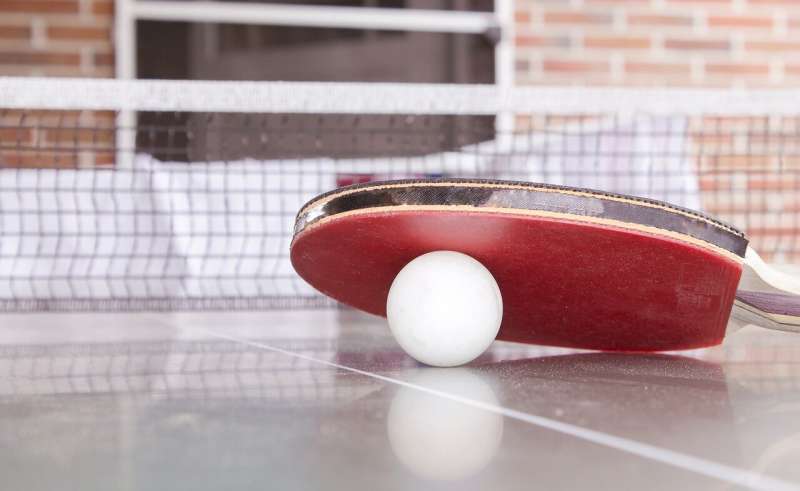
A team of engineers at Google's DeepMind Project has demonstrated a robot capable of playing amateur-level table tennis (ping-pong). The team has published a paper on the arXiv preprint server describing how they developed the robot, how well it performed at different ability levels and how human players responded to playing with the robot.
Over the past several years, robot scientists have been combining advancements in robot design with artificial intelligence, resulting in the development of robots with ever increasing abilities. In this new effort, the research team has developed an AI-based ping-pong player with the highest performance level ever for a robot.
To build their robot system, the researchers started with a robot arm called the ABB IRB 1100—the robot is currently used in real-world industrial applications. In addition to its ability to manipulate its arm and hand very quickly, it can also quickly slide side-to-side on a rail. These features made it an ideal ping-pong-playing candidate.
To give the robot the ability to play the game, which requires a very high degree of responsiveness, dexterity and thought, they used a two-tiered approach. The first tier involved executing table tennis moves, while the second was focused on strategy.
Its brain architecture combined multiple skill level controllers to handle each of the types of moves needed to return a ping-pong ball correctly. Each was trained using AI routines that learned by watching physics simulations and humans playing the game—an approach that allowed the use of a relatively small data set. They also used an iterative process to refine the robot's skills.
Once the robot was tested virtually and deemed ready to play humans, the researchers conducted 29 matches involving humans with highly variable skill sets. The robot could easily beat all the beginner-level humans but none of those with a high level of skill. It won just over half of its matches against intermediate players.
During testing, the research team discovered weaknesses in the robot's game—slow reactions to fast and/or high balls, reading spin and hitting backhand shots—that they will seek to fix.
More information: David B. D'Ambrosio et al, Achieving Human Level Competitive Robot Table Tennis, arXiv (2024). DOI: 10.48550/arxiv.2408.03906
Achieving Human Level Competitive Robot Table Tennis, sites.google.com/view/competit … e-robot-table-tennis
Journal information: arXiv
© 2024 Science X Network
Citation: DeepMind develops a robot that can play amateur level ping-pong (2024, August 9) retrieved 9 August 2024 from https://techxplore.com/news/2024-08-deepmind-robot-play-amateur-ping.html
This document is subject to copyright. Apart from any fair dealing for the purpose of private study or research, no part may be reproduced without the written permission. The content is provided for information purposes only.
